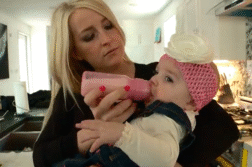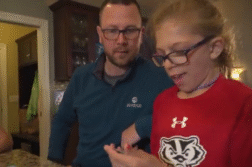SAN ANTONIO, TX (Ivanhoe Newswire) – An eight-year-old boy’s experience could be your own. He went to the doctor for head cold symptoms. He ended up in the OR to fix a rare heart condition.
Eight-year-old Emmitt was playing outside as usual, when he ran out of breath.
“My heart was beating fast, but I took some rest and I got better,” says Emmitt.
Emmitt’s mom thought it was just a cold, but following an MRI, the doctor diagnosed him with aortic coarctation, a narrowing of the aorta. Rare Heart condition
Victor Bautista, MD, chief of surgery at CHRISTUS Children’s Hospital explains, “They don’t have symptoms, most of the time, but they have elevated blood pressure. But for a baby, small kid or even a teenager, you know, that is not that common and that should raise a concern.”
The aortic coarctation triggers hypertension when it narrows and inhibits blood flow.
“Specifically for this patient there were two options that were very feasible — intervention in the Cath Lab, or surgery,” Dr. Bautista says.
Not an easy decision for his mom, Breanna.
“It was very nerve wracking, especially not knowing the outcome,” she says.
Emmitt is one of only 200,000 people suffering from aortic coarctation, but following his surgery, he’s healthy and actually eager to get back to his math homework.
Breanna says, “He’s a Texas tornado, that’s what he is. From the moment he wakes up until the moment he falls asleep, he’s always on the go.”
“It feels better now that I’ve recovered from the deal,” surmises Emmitt.
Dr. Bautista says the repair utilized only Emmitt’s natural tissue and it’s unlikely he will have any problems down the road. If by chance, a problem arises, the next time he would undergo a Cath Lab procedure — a much easier and quicker solution. Rare heart condition
Contributors to this news report include: Donna Parker, Producer; Bruce Maniscales, Videographer; Roque Correa, Editor.
To receive a free weekly e-mail on medical breakthroughs from Ivanhoe, sign up at: http://www.ivanhoe.com/ftk
Sources:
https://rarediseases.info.nih.gov/diseases/5828/aorta-coarctation
MEDICAL BREAKTHROUGHS
RESEARCH SUMMARY
TITLE: EMMITT’S STORY: FROM A HEAD COLD TO A RARE HEART CONDITION
REPORT: MB #5404
BACKGROUND: Coarctation of the aorta is a congenital heart defect characterized by a narrowing of the aorta, the large blood vessel that branches off the heart and delivers oxygen-rich blood to the body. It can lead to significant cardiovascular complications if left untreated. Coarctation of the aorta is typically present at birth, although the exact cause is often unknown. It may occur as an isolated defect or in combination with other congenital heart defects, such as a bicuspid aortic valve or ventricular septal defect. Risk factors include genetic conditions like Turner syndrome. Coarctation of the aorta is a relatively common form of congenital heart disease, with an estimated incidence of three cases for every ten thousand births.
https://doi.org/10.4330%2Fwjc.v7.i11.765)
DIAGNOSING: The age at which coarctation of the aorta is diagnosed will determine the severity of the condition. It is typically diagnosed after bith but in some cases can be determined from an ultrasound during pregnancy. Adults and older youth with coarctation of the aorta may appear healthy and not display symptoms. The symptoms of coarctation of the aorta can vary based on the severity of the narrowing and the age at which it is diagnosed. Diagnosing coarctation of the aorta consists of a series of steps, including clinical evaluation, imaging studies, and sometimes invasive procedures. Early and accurate diagnosis is essential to manage and treat this congenital heart defect effectively. Healthcare providers often check for high blood pressure in the arms, a difference in blood pressure between the arms and legs, a weak or delayed pulse, and a wooshing sound caused by faster blood flow through the narrow artery. The diagnostic process typically begins with a physician taking a detailed medical history, focusing on symptoms such as shortness of breath, chest pain, fatigue, and high blood pressure. In infants, poor feeding, irritability, and failure to thrive may be noted.
NEW TECHNOLOGY: A recent and promising advancement in the treatment of coarctation of the aorta is the creation of biodegradable stents. This advancement could offer a solution for endovascular therapy for neonatal and infant conditions. This practice keeps the coarcted aortic segment open and dissolve over a period of months. The scaffolding left over can create a good ratio of the normal aortic tissue to abnormal tissue which could in turn prevent a notable renarrowing.
(Source: https://www.ncbi.nlm.nih.gov/pmc/articles/PMC4710863/)
FOR MORE INFORMATION ON THIS REPORT, PLEASE CONTACT:
CHRISTUS Children’s Heart Center (210) 704-8829.
For media inquiries – Gloria Madera gloria.madera@christushealth.org
If this story or any other Ivanhoe story has impacted your life or prompted you or someone you know to seek or change treatments, please let us know by contacting Marjorie Bekaert Thomas at mthomas@ivanhoe.com




